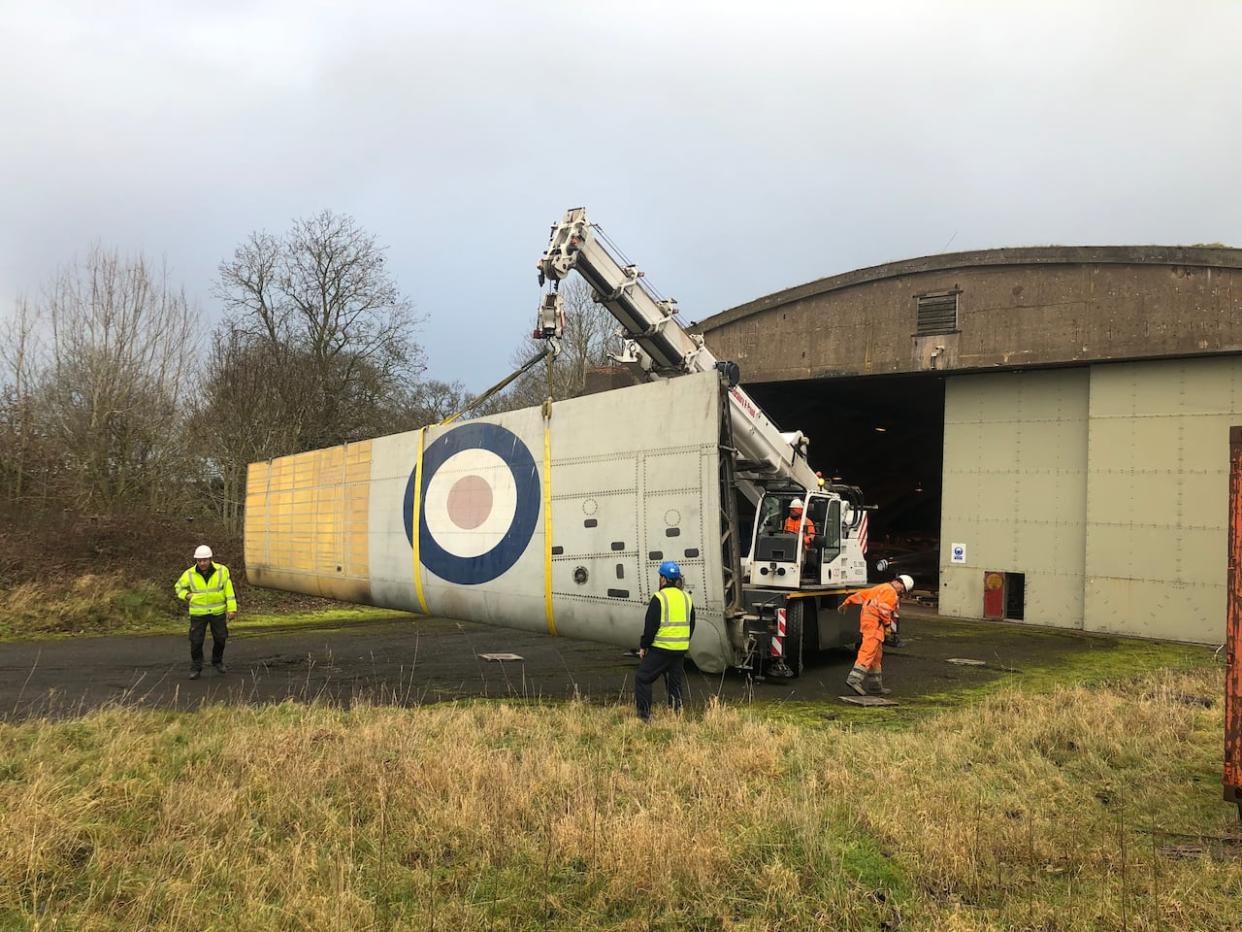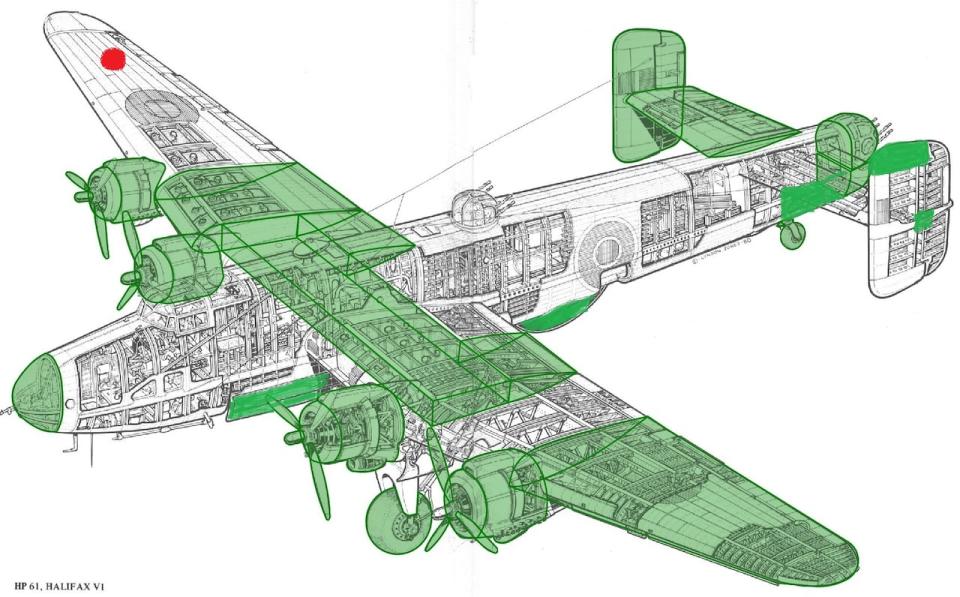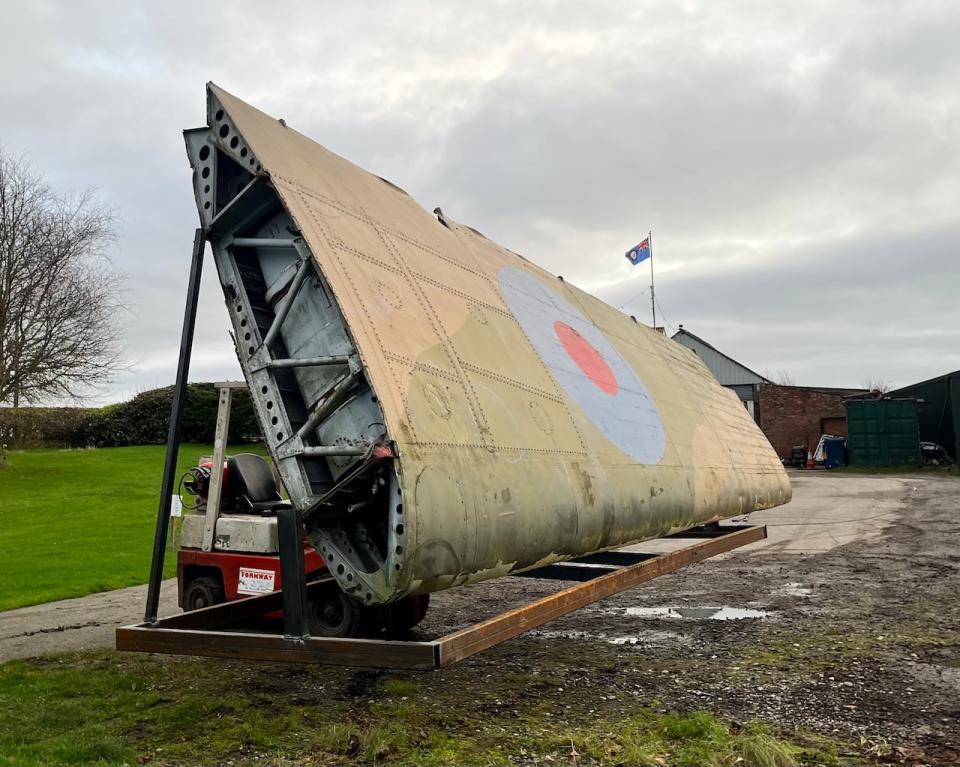U.K. museum donates 860-kg aircraft wing to Alberta military collection

The Bomber Command Museum of Canada has received a massive donation from England's acclaimed Royal Air Force Museum.
The London institution agreed to part ways with a historic wing panel that weighs 860 kilograms (1,900 pounds).
The Bomber Command Museum in Nanton, Alta., will use the wing in a major recovery project aimed at restoring a Halifax bomber that was struck by lightning and crashed into the Baltic Sea during the Second World War.
"It doesn't fit in my Christmas sock, but it's certainly a beautiful present from the Royal Air Force Museum," said Karl Kjarsgaard, curator of the Bomber Command Museum.
"I guess Santa Claus is looking down on us and saying, 'wow, we got to help these guys at the Bomber Command Museum.'"
Kjarsgaard and his team have spent years scouring blogs, private collections and even the seafloor to find the right parts.
When he learned the U.K. museum would sign over a matching wing panel from a different plane, Kjarsgaard said he jetted to England and booked a last-minute crane crew to remove it from deep storage.
"Here's this huge, famous museum in London, England, and they recognize the worth of what we were doing at the Bomber Command Museum," said Kjarsgaard.
"They have never given artifacts of aircraft to a Canadian museum before, so it's quite a feather in our cap."
Kjarsgaard said the Royal Canadian Air Force has agreed to fly the wing — stretching 8.5 metres, or 25 feet — across the Atlantic early next year.

Karl Kjarsgaard and his team have acquired the Halifax parts coloured green in this graphic. White parts have not yet been found. The donated wing panel is marked by the red dot. (Submitted by Bomber Command Museum)
Bomber tells Canadian history
Canadian troops used the Halifax bomber in combat for three years during World War II, according to the museum in Nanton, which is south of Calgary.
The museum said 3,675 airmen died flying Halifaxes, more than any other plane in the Royal Canadian Air Force's bomber forces.
Scott Knox, chief technologist of the restoration project, said his dad flew a Halifax bomber in World War II. He survived the war.
"My dad, [like] so many vets, never really spoke of the war.… And it wasn't until later on I started doing some digging around, doing some research, and I just found out what a hero he was," he said.
Rebuilding the plane is a way to remember his dad's service, Knox added.
"Most people go to Remembrance Day, you know, one time a year. I do it pretty well every day."

Karl Kjarsgaard bought another Halifax wing panel from a private collection this year. Both are in storage in England. (Submitted by Bomber Command Museum)
Knox said he's spent thousands of hours on the restoration, and the donation from the Royal Air Force Museum has saved him years of work because he has to build from scratch any parts they can't find.
Replacement parts are difficult to find, Kjarsgaard said, because most were cut up for scrap metal.
Kjarsgaard's group, Halifax 57 Rescue, which is affiliated with the Bomber Command Museum of Canada, sends a dive team each year to the crash site off the Swedish coast to dredge up more parts.
"It's working out well, and I guess you could say our theme song is that Johnny Cash song, One Piece at a Time."
Work to restore the plane is expected to continue for several years. Kjarsgaard hopes to raise enough money to build another aircraft hangar to display the finished bomber.

